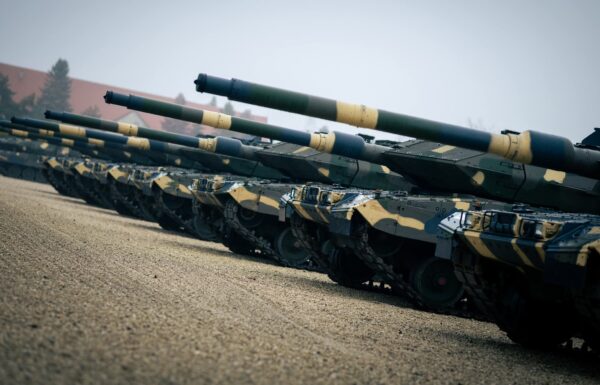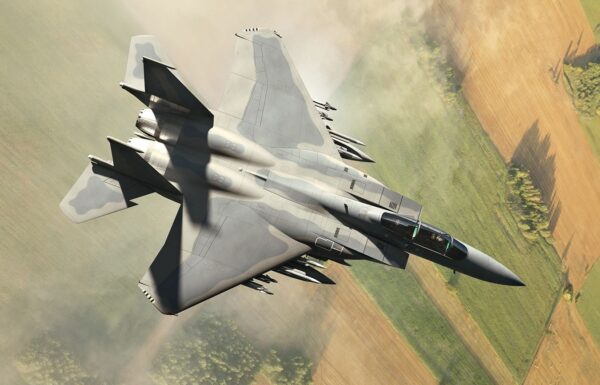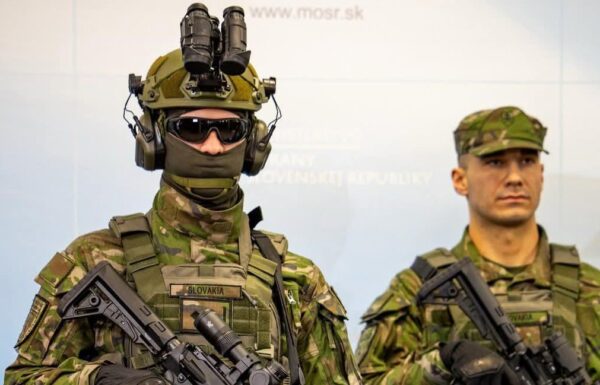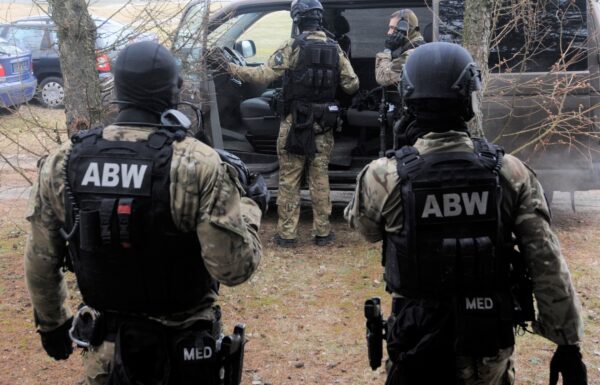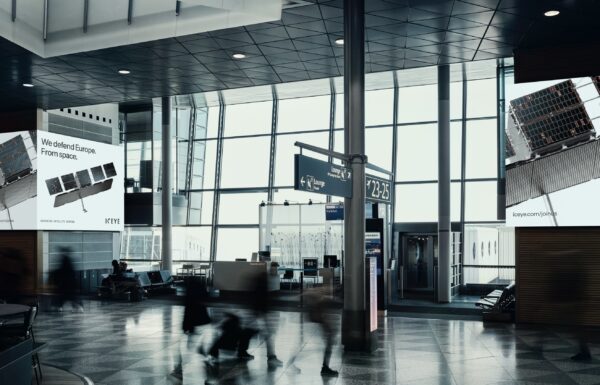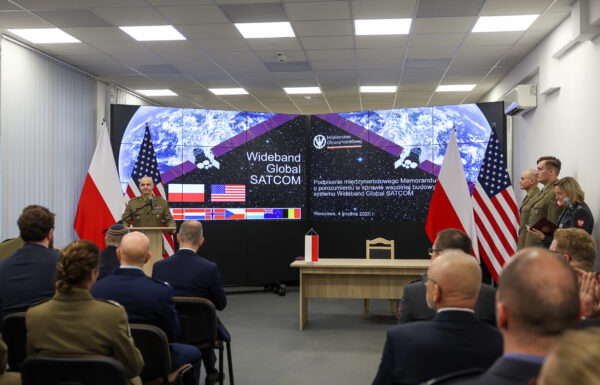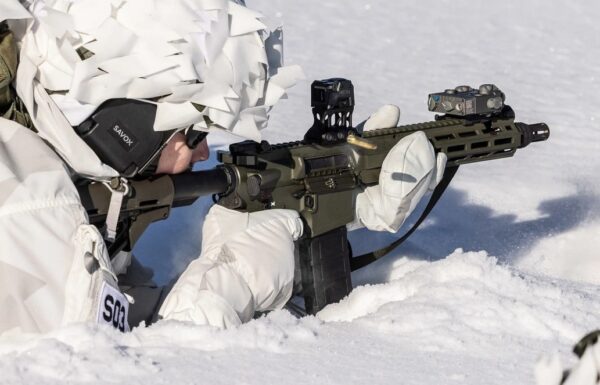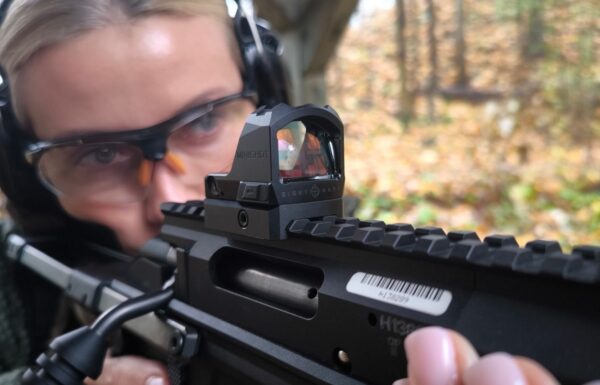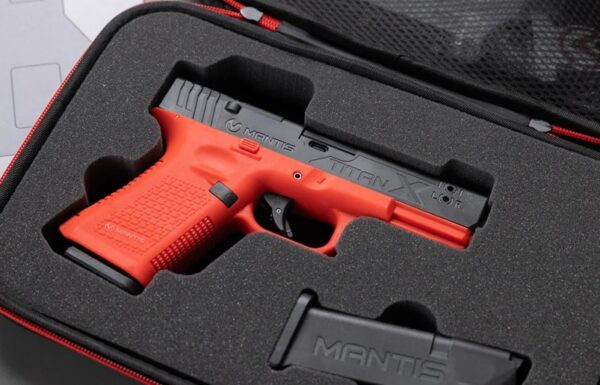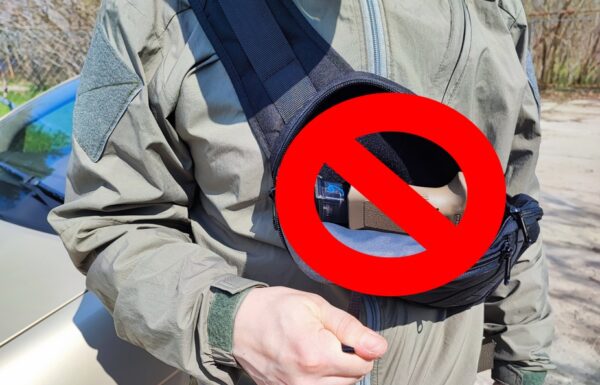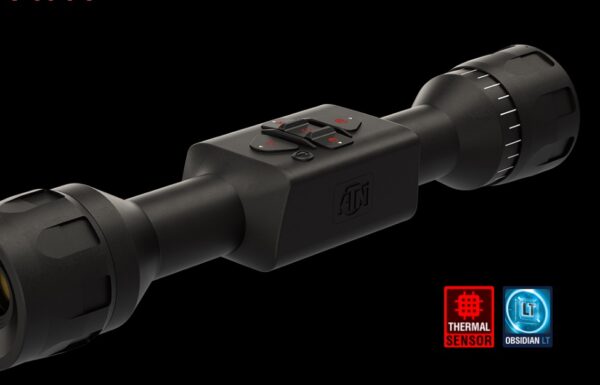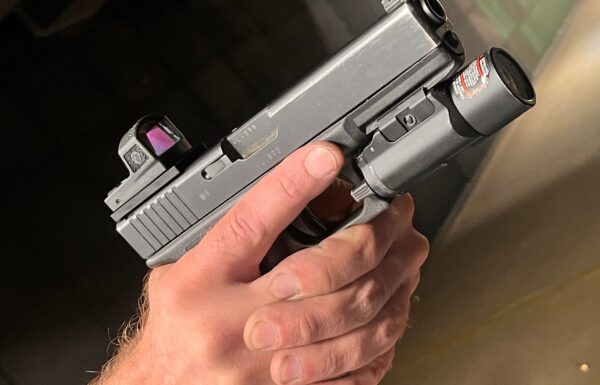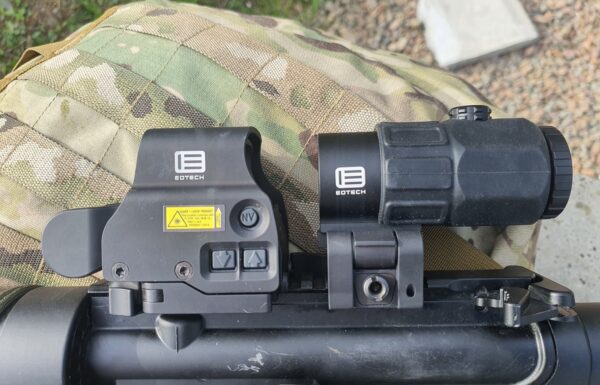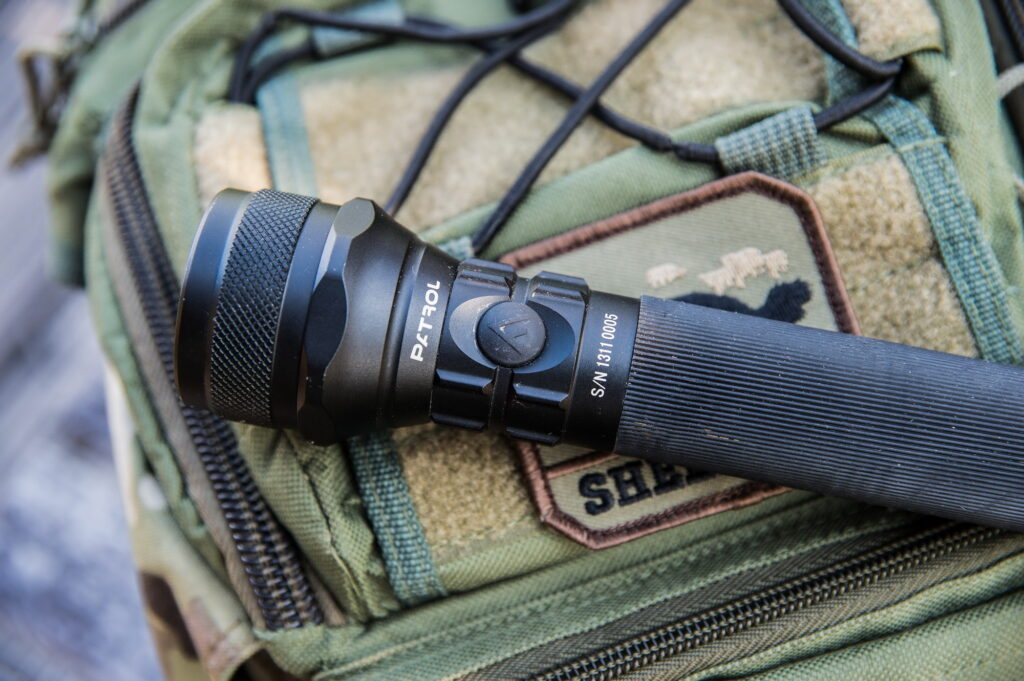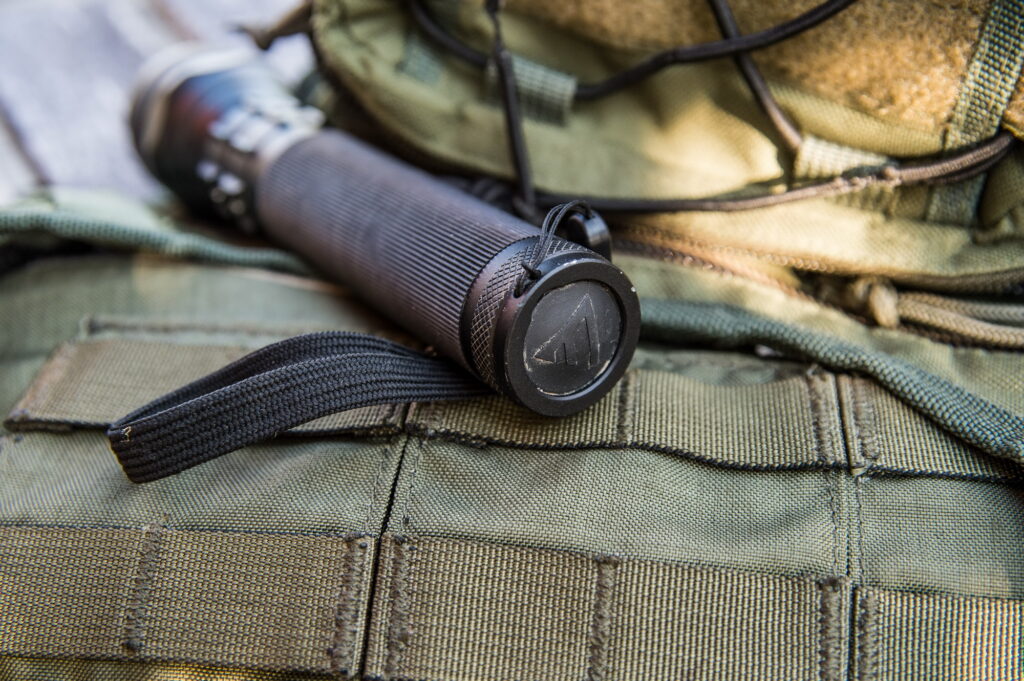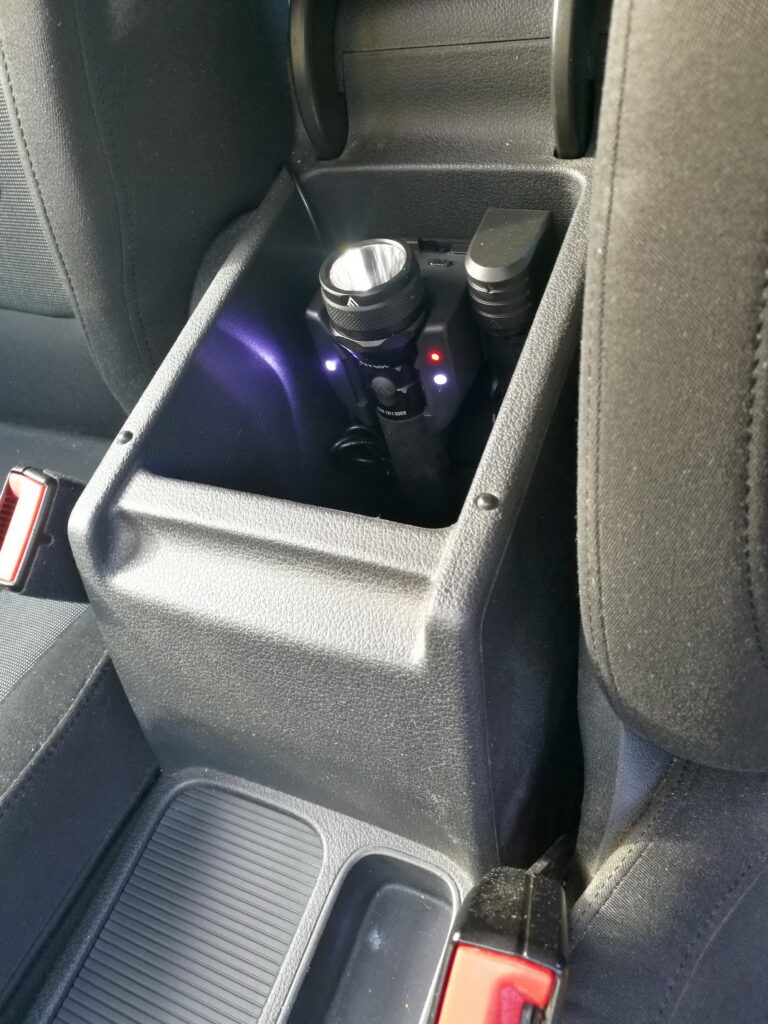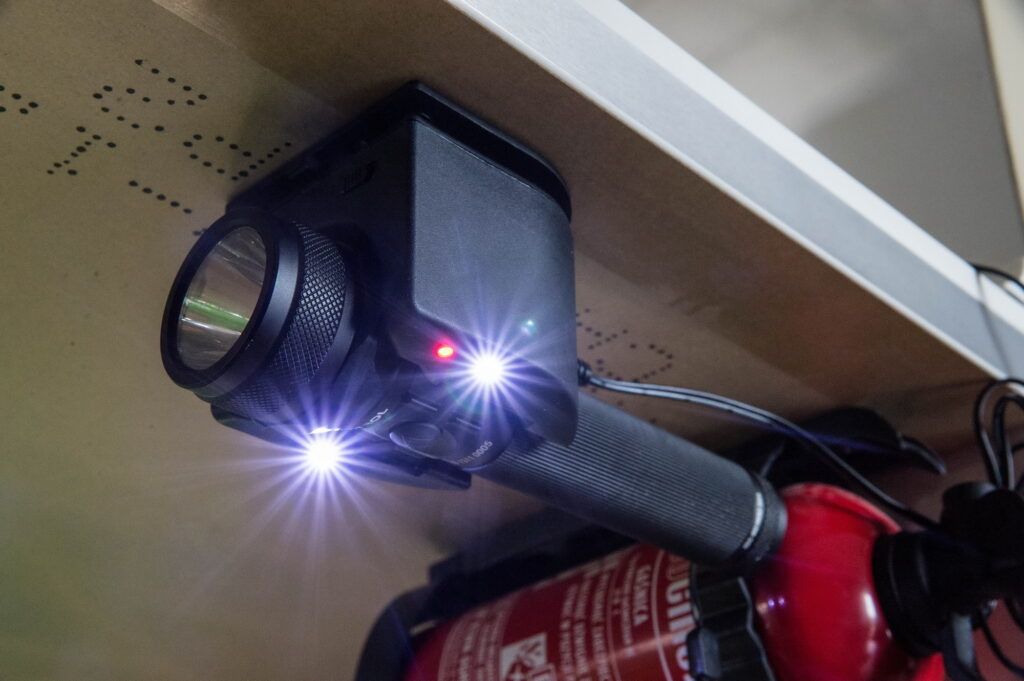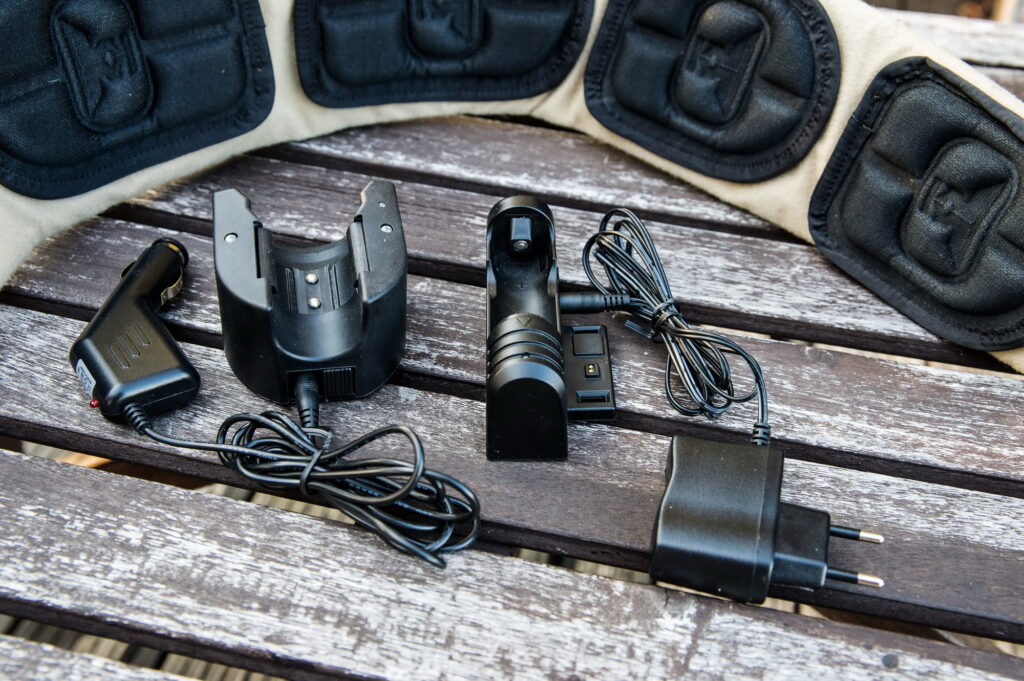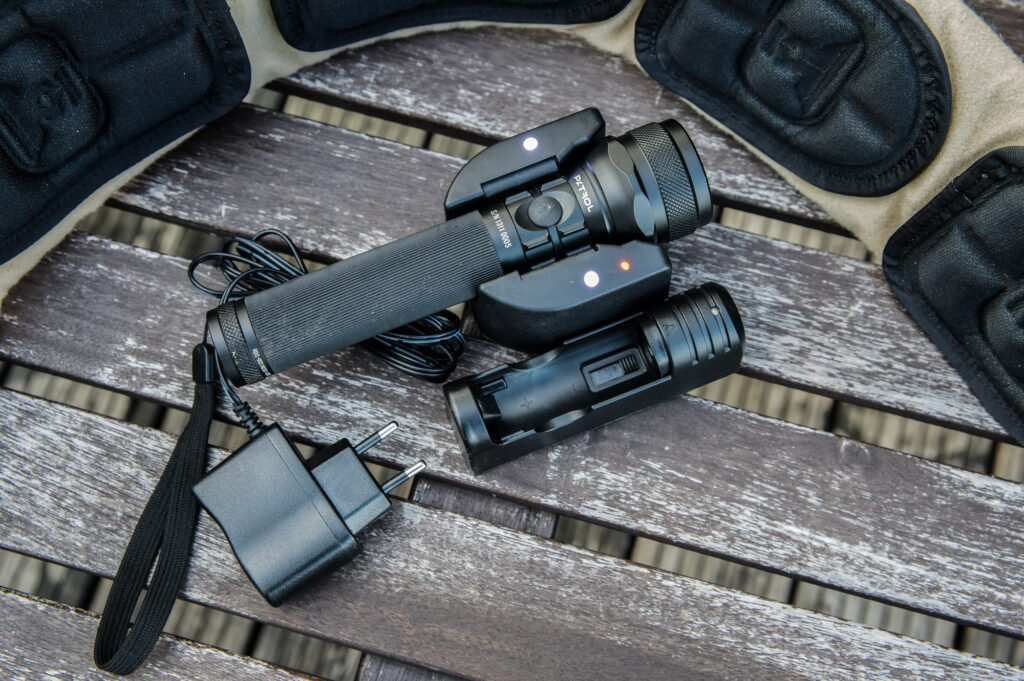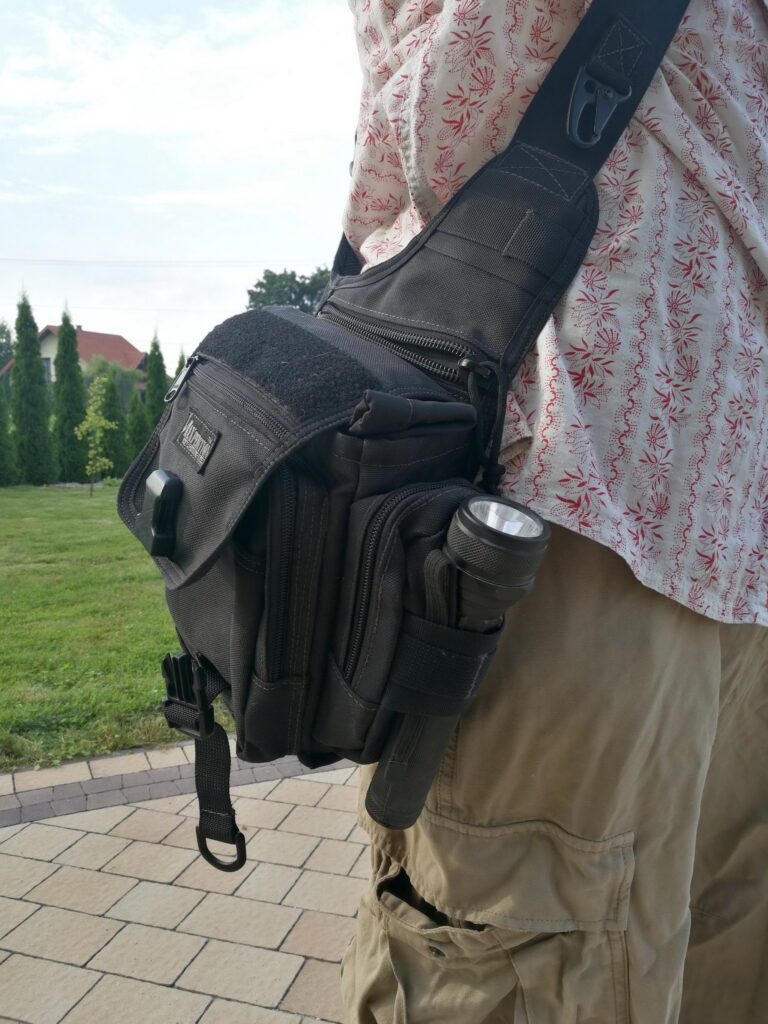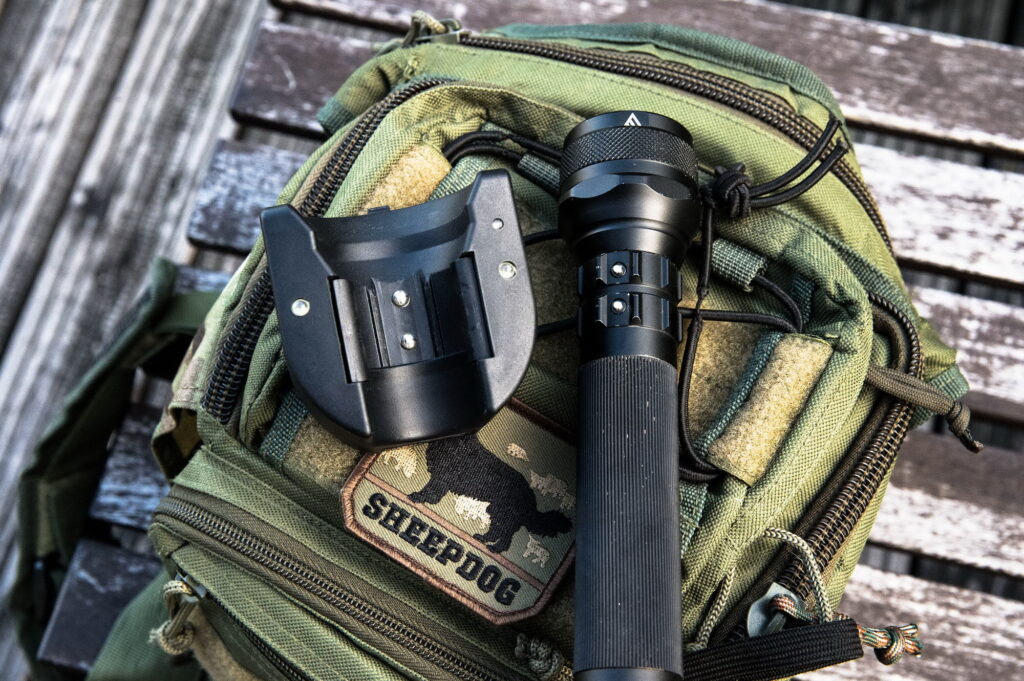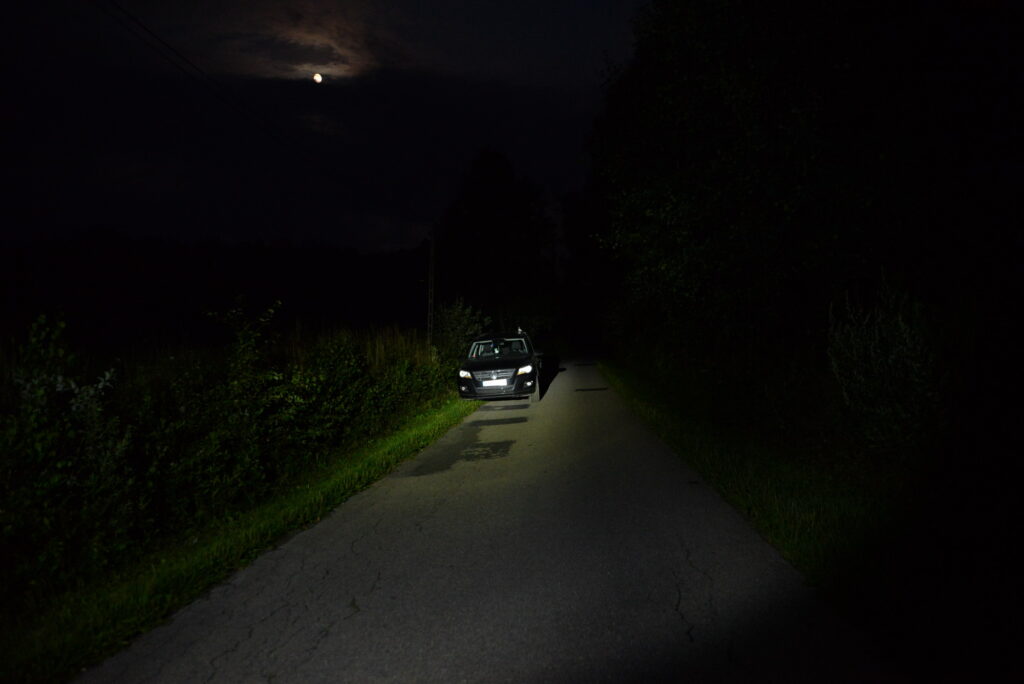Usually, during an unexpected power outage at night, we discover two universal truths regarding our flashlight. The first truth is that the flashlight isn’t in place where it was supposed to be. The second is that when finally found, it won’t have enough juice to last through the outage. Basically, the only way to avoid those two user-faulted issues is using a charging dock. This is
a common solution for facility flashlights, one of which is Mactronic Patrol Charger+. Not only the docking station should stay in the same place, but also the flashlight itself almost certainly will be fully charged. Assuming anyone did connect it properly to power source, of course.
Facility Flashlight
Facility patrol flashlight are typically quite versatile. On one hand, they are small enough to be comfortably carried in a belt holster or a side pocket. On the other hand, they provide more light than typical pocket models. They are suitable for patrolling, searching, and signalization.
Charging dock can be installed in a building or a car – powered with either AC or DC as needed.Its functionality helps solve problems mentioned above. As long as the user will remember to connect the flashlight into the dock, it will be charged and ready to use. While facility flashlights are generally intended for uniformed services, they are universal enough to serve as emergency light source for a house or large flashlight during a touristic trip.
Facility patrol flashlight Patrol Charger+ design is solid and thought through, confirmed multiple times during the tests
Patrol Charger
Patrol flashlight Mactronic Patrol Charger+ (producers code THH0052) belongs to Tactical family. It is made by company specializing in production and distribution of light sources intended for uniformed services and civilian purposes.
Patrol Charger+ uses Cree XP-L diode as a light source, having a maximum brightness of 700 lumens. It is covered with a scratch and break resistant lens made out of Lexan polycarbonate. The device is powered by a Li-Ion battery with the capacity of 3350 mAh. The flashlight’s length is 185 mm (7.28 in.), with the diameter of 47 mm (1.85 in.) in the widest point, and 31 mm (1.22 in.) in the narrow part. The device weights 230 grams (0.507 lb.).
Beyond the flashlight, the set also contains a charging dock, a mounting plate, a charger for spare battery, a battery, wrist loop, and two power supplies, a 230 V AC with Polish plug, and a 12/24 V DC with plug fitting car lighter socket.
At first glance, Patrol Charger+ gives a solid impression, and further experience confirms it. The chassis is made of aluminum alloy, with rubber-covered anti-slip grip. The ring around the head is shaped in a way that prevents the flashlight from rolling away when put down. Below the head docking elements are placed, composed of double corrugated ring that holds the flashlight in the charger, with two exposed contacts. All the parts are well fit, with the threads of the head and the cap leaving no unnecessary leeway. The same applies to knurling on those parts, providing for better grip while unscrewing them. Tightness is ensured by o-ring rubber gaskets, giving the flashlight water and dust resistance at IP68 level.
The flashlight has a laser-etched Mactronic logo, with a name PATROL printed on its body. Below the power button, a unique serial number is listed (tested model was S/N 1311 0005I). Another designation was placed inside the cap (RDC-002198283-0005).
Modes Of Operation
Flashlight has two control button (adorned with the producer’s logo), with the same functions. The first, smaller button, is placed directly below the head and can be operated with a thumb. The bigger second button lies on the end cap of the flashlight and works well with the reverse grip. The buttons work well even with thick gloves.
Patrol Charger+ has four modes of work: 100%, 50%, 10%, and strobe light. Light brightness is regulated via single clicks of the button, while holding it turns on the strobe. The flashlight can’t be programmed, always switching on at the full power. Turning off the flashlight requires cycling through all the modes.
According to the producer, Patrol Charger+ can work 2.5 hour in 100% mode, 5 hours in 50% mode, 25 hours in 10% mode, and 6 hours in strobe light mode.
The head with smaller button below. Patrol Charger+ has four modes of work: 100%, 50%, 10% i stroboscope. Power is switched with a single button click
Second button, similarly adorned with Mactronic logo is on the bottom
Charging Dock
SThe docking station that is part of the set, is made of plastic. Patrol Charger+ is held in position with spring-loaded latches, fitted to the crimped rings on the flashlight. Protruding contacts deliver the charging current. The station itself is installed in the desired place with separate mounting plate. The dock can be moved around without unscrewing the plate thanks to an easy to operate latch.
A secondary charger can be mounted to the side of the main charger, allowing the user to charge a spare battery. Power sockets are placed at the bottom. The device is equipped with micro USB socket in addition to regular power grid and car lighter sockets. The tested unit was quipped with multiple diodes signalizing proper placing of the flashlight, charging status, as well as white LED acting as an emergency lightning. The later turn on automatically during external power outage using the flashlight’s battery. That function can be turned off with a button placed at the top of the docking station.
The producer lists full charging time of a discharged flashlight as 4 to 6 hours at 240 V AC, with two batteries taking between 6 to 10 hours.
Charging dock installed in a car compartment. White diodes signalize lack of external power source and help find the flashlight. The set is small enough that the compartment remains closed
Power Outages
Patrol Charger+ flashlight was tested for over three months. In the beginning, it fulfilled the role of emergency light source in a household. The charging dock was installed underneath countertop of a kitchen island, next to the extinguisher, and the first aid kit.
Additional LED diodes of the charging dock were turned on, and the flashlight spent most of the time plugged in. Power outage occurred soon enough. Immediately after the power went down, the diodes started to glow. They were bright enough to find and safely reach the flashlight without dazzling. Patrol Charger+was fully charged, and due to flat bottom could stand on a table as an emergency lamp. In the 10% mode, the light was sufficient to wait comfortably for the power to return. The only thing missing was external diffuser but the producer doesn’t offer any.
The station installed at home underneath the countertop. Lit up dock works finely during the power outage
Flashlight At Home
The flashlight worked without issues. Brightness modes are finely chosen for such application. Full power allows for checking the surroundings of home and a modestly sized parcel. The producer declares useful range of 250 meters. We haven’t checked it at such long distance, but it had no problems illuminating objects at up to 150 meters. The flashlight head heated quite quickly, but it’s not surprising at such power level. 50% mode worked fine during the normal use: checking fuse box, scrounging through pantry, and night walks. 10% mode was used as an emergency lighting to wait through power outage comfortably.
Contact With Station
A few hours later, after the power was restored, the flashlight returned to its place. This is when a small problem appeared. On paper, placing the flashlight in the docking station is not hard. You have to put it between latches, turn and move until the charging diode lights signalizing the Patrol Charger was placed in correct position. In reality, the process was frustrating and time consuming, especially in the upside down position (the dock was mounted underneath the countertop). Initial judgment: lack of practice, next time will be better. Indeed, with time the process became smoother, but the issue remained. Placing Patrol Charger+ back in its charging dock was irritating each time. Contact position between the flashlight and the dock is so minimal, that finding it takes annoyingly long seconds.
Docking station and battery charger can be used separately. Each has two power sockets, traditional and micro USB
Additional battery charger is part of the set. It can be connected to the docking station forming aesthetic charging dock
In Car
In the second stage of tests, the flashlight was moved to off-road car, as a part of its outfit. The car was used on a daily basis in a wide array of arboriculture operations. The car also servers as local rescuer for stuck off-road cars. Mounting of the docking station was uneventful. Power was connected to backside lighter socket. The cable provided was long enough to place the station beneath passenger’s compartment.
Regretfully, at higher speeds over uneven ground the flashlight often fell out of the dock. Vibrations generated by faster drives slowly loosened Patrol Charger+. After going over a bigger hole or a bigger rock, the clamps were surrendering to the gravity. Even when the flashlight stayed in its place, it often lost charging when the contacts moved a little bit out of their proper alignment.
The issue with the flashlight falling out was solved by moving the docking station to the side of center console. After this step, Patrol Charger+stayed correctly in its place. Sadly, the random issues with charging still happened, though not as often as before.
Field Patrol
Despite those issues, Patrol Charger+ excelled as a work flashlight in a company off-road car. On the tarmac roads the problems waned and the charging was sufficient enough to avoid power shortages. The test also confirmed ruggedness of the flashlight.
Patrol Charger+ survived multiple baths in puddles or mud, and falls from the car’s hood on the rocks below. Once, in the fervor of pulling out a deeply stuck car, the flashlight was driven over into the muddy ground. The only noticeable effect was spontaneous switching to strobe light mode.
The rubberized anti-slip grip works perfectly. Despite wetness and mud, the flashlight laid firmly in the grasp. Its size matters too. For field duty larger and more sturdy light source is superior than typical smaller EDC constructions. Bigger flashlight is more comfortable to hold, harder to lose, and easier to find.
The flashlight can be carried strapped to leg bag
Patrol Charger+ is resistant to harsh environmental conditions. Sealed construction protects internal parts from dirt and water
Flashlight In Forest
In field conditions, the flashlight worked in 50% mode most of the time. It was sufficiently strong to work with cables and winches while staying on for long time. Switching to full power of 100% mode was useful a few times, especially when determining the safest route to pull rescued car.
Patrol Charger+ beam is shaped in the so-called Pre-Focus. It is designed to provide focused light on a longer distance, while being dispersed enough to comfortably use the flashlight inside the car. For the later use, the lowest power setting is perfectly sufficient. Light reflected off windows and mirrors doesn’t dazzles the passengers.
Here a minor flaw was revealed, however. Each time, the flashlight turns on in the 100% mode, which is too bright within the confines of a car at night. Accidental switching on causes momentary blindness. The flashlight has to be covered and the correct mode has to be set to use it comfortably.
Presence of an additional micro USB socket allows charging the flashlight from many sources, such as portable solar panel connected to the docking station. Charging is noticeably slower, however
Shelters And Tunnels
The last stage of Patrol Charger+ tests took place during two week trip to Albania. Because of numerous shelters and tunnels available for exploration, a decent flashlight can be very useful. The charging station was moved again, this time to an SUV.
Admittedly, the installation of the charger on a separate mounting plate is a smart and convenient solution. Repeated moves weren’t an issue at all. After unlatching the dock, it’s easy to unscrew or peel off glued plate itself.
Taught by previous experience, we installed the flashlight vertically, in the armrest compartment, to avoid tempting the curious lookers. Emergency diodes were turned off as the compartment needs little illumination. That was an error on our side, though, because vibration cause misalignment became an issue again. Additionally, placing the flashlight inside the compartment made checking the charge level troublesome.
Despite that, Patrol Charger+ performed excellently during the trip. First, it voided eternal question “where is the flashlight?” Everyone knew it’s in the compartment, charged and ready to use. Only once the battery was not fully charged after reaching the new place when the vibrations interrupted the process. Temporary switch from Patrol Charger+ to a smaller EDC showed how useful is strong light source when setting up the camp in the wild. It was the only use of different flashlight during that trip.
This Mactronic’s product is wonderfully comfy in use. During the foot trips, Patrol Charger+ was attached to leg bag or put inside thigh pocket. Weigh of 230 grams wasn’t particularly noticeable while the flashlight was used multiple times while exploring abandoned tunnels or visiting poorly lit Albanian monuments. The micro USB socket was useful as well, allowing charging the flashlight directly from portable solar panel.
Quickly latched mounting plate is suitable for installation with screws or double sided tape. In the upper part latches can be seen, on the left are contacts of the battery charger.
Always 100%
The flashlight rating would be very high if not for two mentioned flaws. They are not big enough to reject this product, but they are annoying enough you can’t ignore them. Mactronic does work to improve their products so we can hope the next version of Patrol Charger+ will correct them. Inability to program mode in which it turns on is a minor flaw. It makes sense for a patrol flashlight to start in the strongest mode when used specifically for that purpose. However, when it is used as an additional light source in a car or house, it would be handy to change the initial mode to adapt to environment and needs of the user. Not always full 700 lumens is desired immediately after turning on.
Docking Station
The docking station is a bigger issue, especially that it is the most important part of the construction. Here, the problem is the way Patrol Charger+ is inserted into the charger and the contacts between the charger and the flashlight.
It’s hard to place the flashlight quickly and securely in a way that would start the charging process. Each time it required moving the device around. Inserting the Patrol Charger+ correctly while driving Is particularly problematic. The size of the contacts is too small and the sole indicator of success is the charging diode. Maybe daily use of Patrol Charger+ would develop the right touch.
The docking station isn’t holding the flashlight’s torso firmly enough. Even in vertical position, when falling out stopped being a problem, the car vibrations interrupted charging. When the docking station is visible, that’s irritating. Worse, when it’s placed within a compartment. You might discover on reaching your destination that the flashlight will glow for 10 minutes before dying because few hours earlier you drove over a hole. That’s why I can’t imagine keeping Patrol Charger+ on quad or UTV. If not for the docking station, this would be the perfect flashlight for such use. The charging dock could use additional lock to secure Patrol Charger+ in the station.
Small contacts placed opposite the power button. They are placed in corrugated rings which help place the flashlight into docking station. Sadly, they are missing clear sides that would warrant proper alignment with the charger
Rating
Patrol Charger+ is very versatile. It can be used either as a powerful patrol light source or a bigger version of EDC flashlight. It is handy and solid, and the charging station is an additional point. It works perfectly as the emergency light in a car. Equipped with an additional overlay, it can be used for signalization or traffic management.
Diodes placed on the station will be helpful when Patrol Charger+ is used in household or another building as emergency lighting that helps reach the flashlight faster. Easy of charging, high capacity battery, and well picked modes warrant maintenance of constant readiness.
Mactronic product is worthy of your attention and is excellent in the emergency light role for house or car. Forgetful and hurried will appreciate ease of charging with the docking station. Strong diode and big battery will work for civilian and uniformed uses.
Mactronic Patrol Charger+ illuminating car at the distance of 25 m, and hunting pulpit at 55 m with full power
We would like to express our gratitude to Mactronic for test unit
This article was originally published on MILMAG 03-04/2018


